A laidback, friendly, and comparatively very safe tourist destination in East Africa, Mozambique offers visitors numerous things to see and do. Perhaps most popular are the dozens of stunning tropical beaches that are perfect for just lazing around on.For beach holidays, Mozambique is arguably the best destination in Africa. It's widely lauded as one of the best destinations in the world for scuba diving and game fishing, and its colourful and well-preserved coral reefs and clear warm waters attract plenty of snorkelers and honeymooners.See the enormous sand dunes and freshwater lakes of Bazaruto Island or visit Benguerra Island's forests and wetlands. History enthusiasts will enjoy the historic lighthouse on Inhaca Island and a number of UNESCO-listed cultural attractions.Known mainly for its beach resorts and ocean activities, other attractions include Africa's second largest artificial lake, Cahora Bassa, and Gorongosa National Park. The north of the country offers some amazing wilderness areas.Go horse riding on the beach in Vilanculos, or scuba diving in its turquoise waters, and take a trip on a Pemba Bay dhow. Ponta d'Ouro, in the south, is good for swimming with dolphins, or surfing one of the most perfect waves in the world.
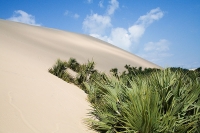
The largest island in the archipelago, Bazaruto Island is about 23 miles (37km) long and four miles (7km) wide, surrounded by magnificent stretches of white sand. Enormous sand dunes comprise the eastern strip, while the interior contains large freshwater lakes inhabited by crocodiles and frequented by a wide variety of water birds, including flamingos.On the northern tip of the island is a lighthouse built by the Portuguese over 100 years ago, which signals to the large number of ships travelling the historic Mozambique Channel and affords spectacular views from its tower.World famous for its large game fishing, Bazaruto is a popular diving destination with a rich variety of marine life surrounding the island. The Bazaruto Marine National Park offers coral reefs, crystal-clear waters, and diverse underwater life.Reef sharks, dolphins, manta rays, and turtles are regular visitors to these waters, and the turtles lay their eggs on the beaches of the island. Humpback whales can be found between August and October, and whale sharks between April and July.Tourist facilities, upmarket lodges, and exclusive resorts dot the island and most gear themselves towards luxury tourism. Bazaruto is accessible by boat or plane from Vilanculos.
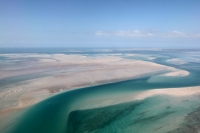
Benguerra is the second largest island of the Bazaruto Archipelago, less than half a mile (1km) south of Bazaruto. Like its neighbour, Benguerra boasts stunning beaches, large sand dunes, and freshwater lakes.Its forest and wetland areas attract a huge variety of birds and animals, while its surrounding reefs offer some of the best diving and snorkelling opportunities on the African continent. Two-mile Reef is to the east of Benguerra.Its protected lagoon, known aptly as the Aquarium, vis an underwater paradise with beautiful corals and a wealth of tropical fish, popular with both divers and snorkelers. People will find the famous Pansy shells along the sandbanks to the north of the island.Most visitors go to Benguerra for the big game fishing as its deep waters teem with the likes of marlin and barracuda. The area is world-renowned as a sport fishing destination and is accessible by boat or plane from Vilanculos. Happily, there's plenty of accommodation on the island.Tourist facilities are good, with a number of upmarket lodges and exclusive resorts geared towards luxury tourism. Benguerra is a popular honeymoon destination and remains an unspoiled natural paradise, fast becoming one of the best luxury beach destination in Africa.
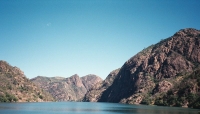
Situated in the Tete Province of Mozambique, Cahora Bassa is one of Africa's largest artificial lakes. One of three major dams on the Zambezi river system, along with Kariba and Itezhi-Tezhi, it powers the largest hydroelectric scheme in southern Africa.Songo is the nearest town, established in 1969 to house workers for the construction of the dam. There is a number of lodges and camps where tourists can stay, including Ugezi Tiger Lodge which has an à la carte restaurant and a campsite with floodlights and security.Fishing is the dam's biggest drawcard and fishing trips are very popular, as the vast stretch of water contains a huge variety of fish, including tigerfish, sharptooth catfish, vundu, bream, longfin eels, and Zambezi parrotfish.Other attractions in the area include boat cruises and waterskiing. The lake and surrounding landscapes are very picturesque, replete with lush vegetation, dramatic mountain scenery, and a large population of hippos.Majestic baobab trees grow on the southern shores, while the area's rich birdlife will enthral bird enthusiasts. Sunset cruises and boat tours down the beautiful gorges of the dam are a must for travellers in the region.
Admission : Entry to the dam is restricted and visitors should speak to the owner of O Sitio restaurant about admission before leaving Songo.
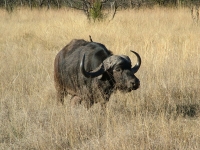
Often referred to as the 'place where Noah parked his ark', Gorongosa National Park was a popular tourist destination for the rich and famous back in the 1960s. During this time, the region's abundant wildlife attracted stars like John Wayne, Joan Crawford, and Gregory Peck.The subsequent years of war and poaching decimated the wildlife count, with programmes implemented to restore the park to its previous star status as one of the richest wildlife refuges on the planet.Dominated by savanna and grassland, Gorongosa has a variety of terrain. Along with woodland and impressive limestones gorges, with lush rainforest covering the slopes. The park now includes the verdant Mount Gorongosa, source of the life-sustaining rivers that traverse the reserve.The mountain is sacred and features prominently in traditional folklore. Even after 17 years of civil war and extensive poaching, the Gorongosa National Park still supports astounding biodiversity and wondrous beauty.Experts have documented 398 bird species, 122 mammals, 34 reptiles, and 43 amphibians. Comfortable lodgings are available for visitors, and game viewing highlights include elephants, buffalo, lions, crocodiles, and zebra.
Website : www.gorongosa.org/
Transport : There are traversable roads to the park from both Beira and Maputo, but it is advisable to make this trip in a 4x4 vehicle.
Opening times : Park is closed between mid-December and mid-April.
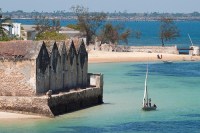
Ilha de Mozambique is an island in the Nampula Province of northern Mozambique, up the coast from Beira. Home to a fascinating heritage, it was an ancient trading port and the capital for nearly four centuries while under Portuguese rule before the move to Lourenco Marques, now Maputo.Now a UNESCO World Heritage Site, the Island of Mozambique is an exquisite mix of Portuguese and Muslim architecture. These divide old Stone Town in the north and Reed Town in the south. There's a great museum found inside the Palacio Govierno, a big red building in Stone Town.Also worth seeing is the fort at the eastern tip of the island, home to the Chapel of Nossa Senhora de Baluarte. It is possibly the oldest surviving European building in the southern hemisphere, dating back to 1522.On a beach on the northern end of the island, there is a dive centre where visitors can take boat trips or just laze on the sand. The more adventurous should travel by dhow to Chaga or Mossuril on the mainland to explore the coast.Requilias and Escondidino are two popular restaurants in Stone Town, and there are a number of local places serving fish and rice, or chima. One of the best options for accommodation is the campsite on the mainland, next to the bridge.
Transport : The tiny island is accessible via a bridge from the mainland. Because of its size, visitors wont have any trouble walking around the island; its a 20-minute walk from end to end, and Gabriels has bicycles for hire.
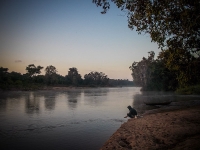
Spanning an area of some 24,000 square kilometres (10 million acres), the Niassa Game Reserve is the largest protected area in Mozabique. It's one of the most pristine wilderness regions in the whole of Africa.Roughly the size of Denmark, the Niassa Reserve is twice the size of South Africa's famed Kruger National Park and boasts an abundance of wildlife, including varied birdlife, and absolutely stunning natural scenery.The park is special because it's essentially a wilderness area and is relatively unexplored. Visitors to the Niassa Game Reserve are spellbound by the changing landscape, ranging from mountain forests to miombo woodlands and savanna grasslands.This is not to mention the high concentration of wild animals, including something like 13,000 elephants, 200 endangered wild dogs, lions, leopards, and a huge assortment of birds. Giant rock formations, of which Mecula Mountain is the largest, are another exciting feature of the park.Tourists usually visit between April and October, the prime season for game viewing. The best places to stay in the Niassa Reserve is definitely the world-class Lugenda Wilderness Camp, which offers comfortable lodgings, game drives, hiking trails, rock climbing, and stargazing opportunities.

Located along a sandy road just south of Maputo, Ponta d'Ouro is home to some of the most perfect waves in Africa. Offering spectacular dive sites and a wealth of sea creatures, it is a popular destination with surfers, divers, and underwater enthusiasts.Swimming with dolphins is a must and can be a deeply rewarding and life-changing experience. Stroll along white beaches stretching far into the distance or explore the rock pools full of colourful shells and corals.Local specialities and trinkets include the locally produced Tipo Tinto Rum, tasting slightly of vanilla and perfect with pineapple or raspberry juice, as well as hardwood carvings in all shapes and sizes. Customers should avoid beautiful shells as are potentially stolen off local reefs.Tours of local pubs, called shebeens, allow visitors to explore the rustic drinking-houses along a stretch of rough road. Accommodation ranges from rustic to luxurious, with lovely campsites right on the beach. Ponta d'Ouro is accessible from South Africa, making it a great addition to a tour of southern Africa.
Address : 75 miles (120km) south of Maputo
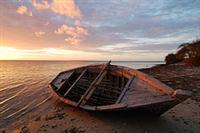
Soon to be listed as a UNESCO World Heritage Site, the Quirimbas Islands are fast becoming Mozambique's new tourist hotspot. This chain chain consists 31 islands in total, stretching south from Cape Delgado for 200 miles (320km).Home not only to some fantastic sun-beaches, fishing opportunities, and world-class snorkelling and diving sites, it also offers truly fascinating cultural sites. Easily accessed from Pemba, the Quirimbas Islands should be the first destinations on any tourist's Mozambique travel itinerary.Visitors can explore the historic Stone Town on Ibo Island, or the mangrove-fringed Quirimbas National Park. There's also the opportunity to go diving from one of the 1,300-foot (400m) drop-off sites sprinkled around the archipelago.The Quirimbas National Park makes a wonderful honeymoon destination, whether one chooses a wooden chalet on the resort island of Medjumbe or a villa on the ultra-exclusive Vamizi Island. Exotic and beautiful, the Quirimbas Islands are a beach holiday sure to rival any in the world.
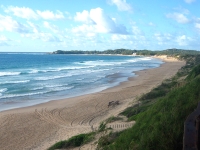
Tofo Beach is in the Inhambane Province of Mozambique. It has certainly become a hotspot for young travellers, with beautiful stretches of beach, a friendly laidback atmosphere, an entertaining nightlife, and great diving and snorkelling sites.Restaurants in Tofo mostly specialise in seafood and piri-piri spiced dishes. Casa Barry has good seafood and views, while Bamboozled offers all-you-can-eat buffets. There's also a number of beach bars and a bustling nightlife, with Fatima's Nest and Dino's Bar and Grill drawing big crowds.Those looking to get away from the throngs of tourists can find local taverns on the edge of town. Tofo, easily explored on foot, also has a market in the centre of town, and you can buy local art on the beachfront. However, those looking for authentic culture and history may be disappointed.The main draw of Tofo is the natural beauty, with pristine beaches perfect for swimming, diving, and water sports. There's amazing scuba diving at popular sites like Manta Reef, and the chance to spot humpback whales, reef sharks, and whale sharks. Beware of jellyfish though, as the giant Portuguese man o' war float through in swarms.
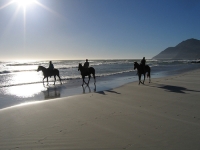
Vilanculos is a popular tourist destination and the gateway to the Bazaruto Archipelago, a group of islands incorporated into Mozambique's stunning underwater national park. Visitors on day trips from the town are encouraged to go scuba diving and snorkelling in the clear waters.There's also the chance to go horse riding along the unspoiled beaches of the Vilanculos coast. Sailing around the archipelago in a traditional dhow is a great way to enjoy the azure ocean waves, sandy beaches, palm trees, and coral reefs of the islands.Vilanculos is also a great fishing area, ranked as the best black marlin destination in the eastern Indian Ocean. The region is best explored on foot, offering a number of good restaurants, a few bars and shops, and a central market in the village of Vilankulo.Although it has been experiencing a tourism boom and has decent amenities and great accommodation options, it has retained its local flavour. There is even a new international airport on the outskirts of town, with flights to both Johannesburg and Maputo.

Travel Guide powered by Word Travels, copyright © 2023 Globe Media Ltd. By its very nature information in this travel guide is subject to change at short notice and travellers are urged to verify information on which they're relying with the relevant authorities. Neither Globe Media Ltd nor Travel Vogue can accept any responsibility for any loss or inconvenience to any person as a result of information contained above.